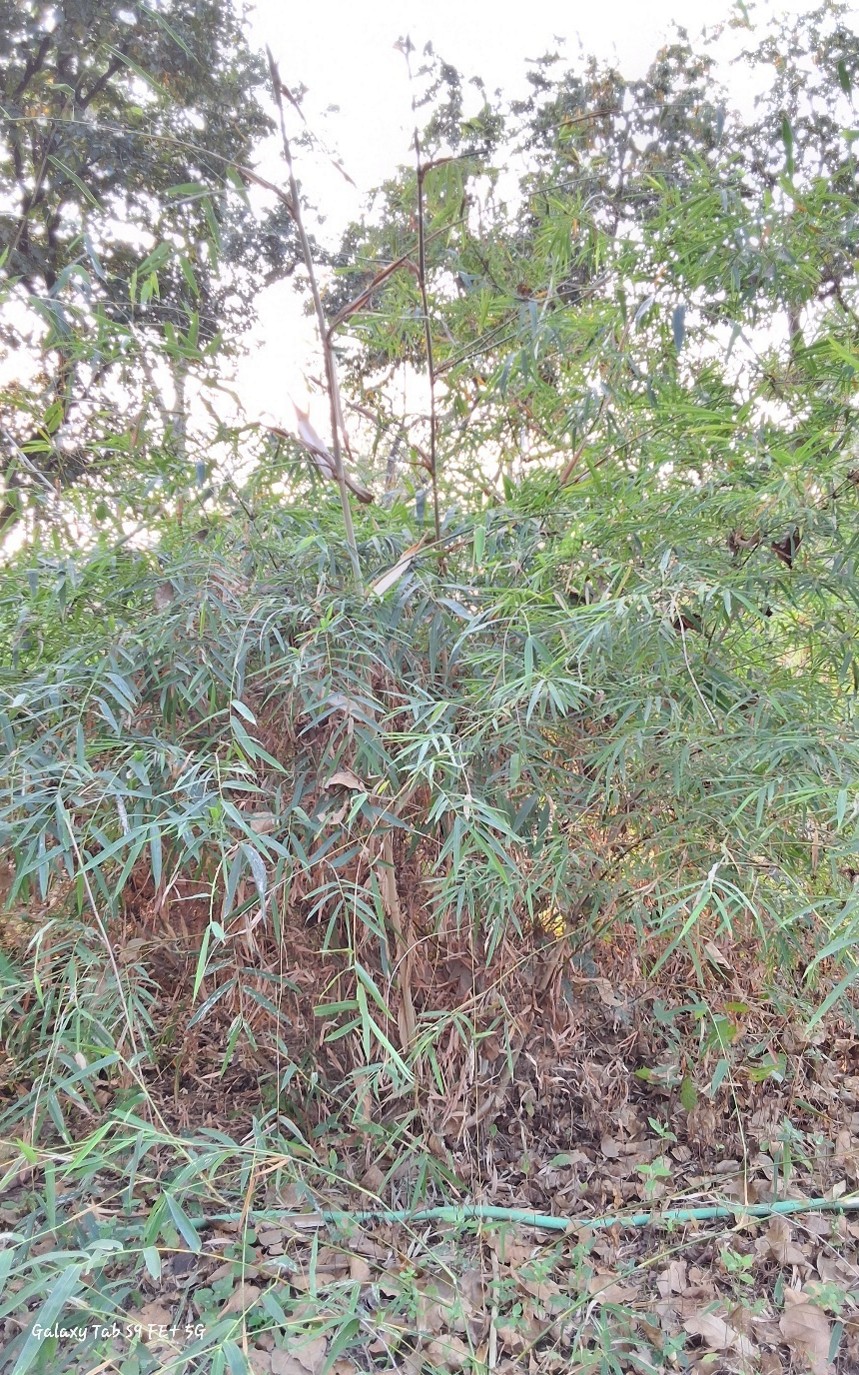Thyrsostachys siamensis

Thyrsostachys siamensis
commonly known as Siam Bamboo or Bai Tong (ใบตอง) in Thai, is a clumping bamboo species native to Southeast Asia, primarily found in Thailand, Laos, and Cambodia. It has also been introduced to other parts of Southeast Asia and tropical regions for both ornamental and practical use.
This bamboo species features dense, clumping culms that grow from a single rhizome, reaching heights between 6 to 12 meters, with a diameter of 3 to 5 cm. The culms are green with a distinctive yellowish or purplish tint at the base. The internodes range from 15 to 30 cm, and the culm sheaths are green when young, turning yellowish-brown as they mature. The adaxial surface of the sheaths is glabrous, while the abaxial surface is slightly pubescent, with ciliate margins.
The leaves of Thyrsostachys siamensis are lanceolate, tapering to a point, with a length ranging from 15 to 25 cm and a breadth of 3 to 6 cm. The leaf texture is thin and papery, with smooth edges. The color is dark green on the upper surface and paler green on the underside. The leaves are alternately arranged, forming a dense foliage cover that provides good visual appeal and shade.
This species thrives at altitudes between 200 and 1,000 meters above sea level, preferring well-drained, fertile soils with a slightly acidic to neutral pH. It grows well in loamy or sandy soils, though it can tolerate a variety of soil types.
The inflorescence of Thyrsostachys siamensis consists of large, loose panicles, with branches that droop under the weight of the pale yellow or greenish flowers arranged in dense clusters. The plant typically has 3 stamens with long, slender filaments. Its flowering cycle is rare, occurring only once every 10 to 12 years. During this time, the plant produces small, easily dispersed seeds that are carried by the wind. Flowering events are infrequent, and seed germination occurs rapidly in warm, humid conditions.
Propagation of Thyrsostachys siamensis is most commonly achieved through culm cuttings, which root easily when planted in moist soil. It can also be propagated by rhizome division, ensuring the retention of strong root systems. While seed propagation is occasionally used, it is less common due to the infrequent flowering cycle.
This bamboo species is highly valued for its attractive yellow-green culms and dense foliage, making it ideal for ornamental purposes. It is commonly used in landscaping, gardens, and decorative spaces. Siam Bamboo is also suitable for light construction purposes, including making fencing, furniture, and small structures. Additionally, it is utilized in the crafting of bamboo crafts, baskets, and woven products. Its dense root system makes it effective for erosion control, especially along riverbanks, slopes, and embankments, where it helps to stabilize the soil. Furthermore, it can be used to create bamboo products, including mats, baskets, and small tools.
In summary, Thyrsostachys siamensis is a clumping bamboo with green and yellowish culms, lanceolate leaves, and a rare flowering cycle. It is used primarily for ornamental purposes, construction, crafting, and erosion control. The bamboo is propagated through culm cuttings and rhizome division, with occasional use of seed propagation due to the infrequent flowering events. Its dense growth and aesthetic appeal make it ideal for landscaping and soil stabilization.
Listen Audio:
Need assistance? BRTC Faculty